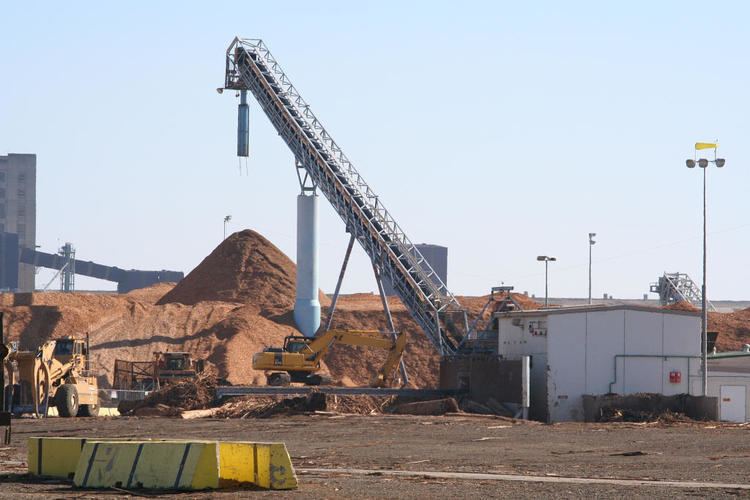 | ||
Woodchipping is the act and industry of chipping wood for pulp. Timber is converted to woodchips and sold, primarily, for paper manufacture. In Australia, woodchips are produced by clearcutting or thinning of native forests or plantations. In other parts of the world, forestry practices such as short rotation coppice are the usual methods adopted.
Uses of wood chips includes the manufacture of particle board (or 'chip board') and other engineered woods, mulch and fuel.
Usage
Wood chips, as a by-product of the timber industry, have been used in many ways for centuries, for example as a material for the production of wallpaper or as a disposable floor covering in butchers shop or drinking houses. Wood pulp is the primary market for the woodchipping industry in Australia.
The practice, known as woodchipping, was to make use of most of the woody material in a tree to produce wood chips. This was then converted into paper, hardwood pulp is mainly used for printing paper and softwood pulp is added for good quality. An energy intensive process, it also involved the use of bleaches and other toxic chemicals. This stage of the process, known as Kraft pulping, was primarily performed in Japan and elsewhere. High demand for paper products saw purpose built bulk carriers increase the export of woodchips from Australia to Japan.
The separation of the chipping stage and the pulping and paper mills required the supply of energy usually sourced from by-products of the process. Additional energy expenditure is found in the shipping of raw materials and export of the finished product.
